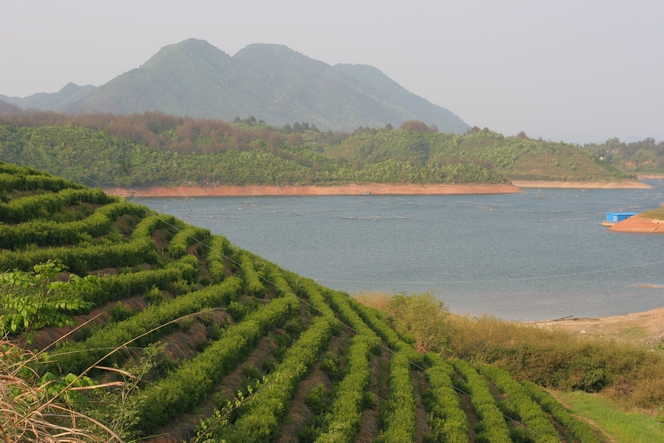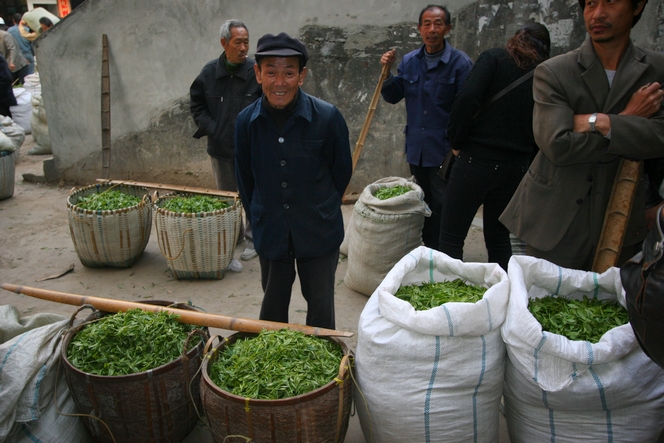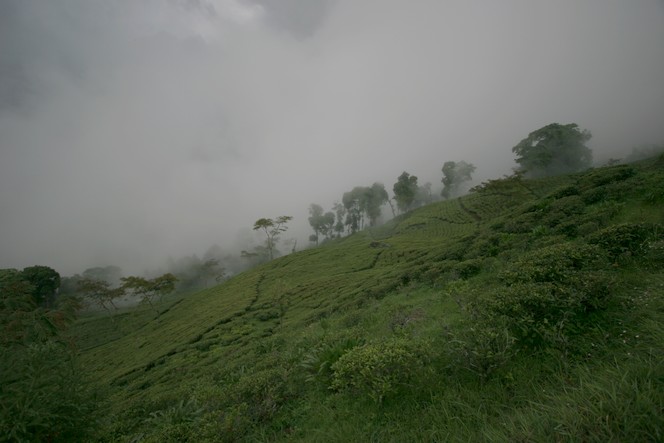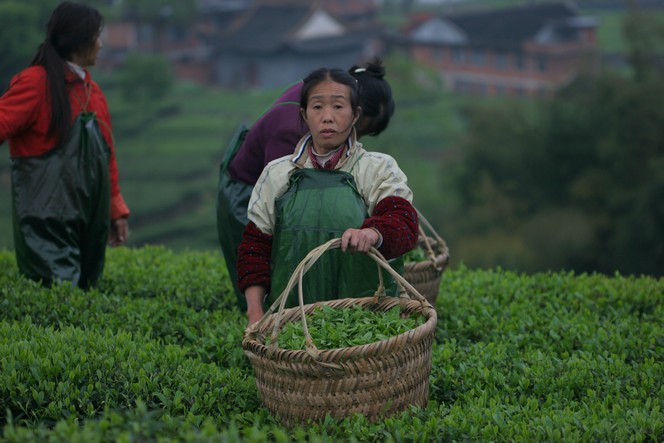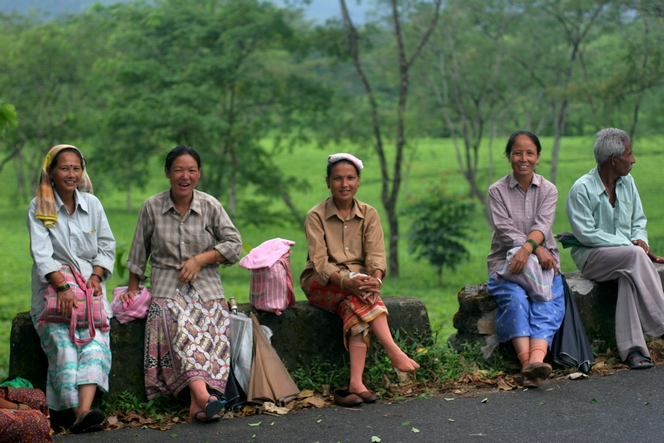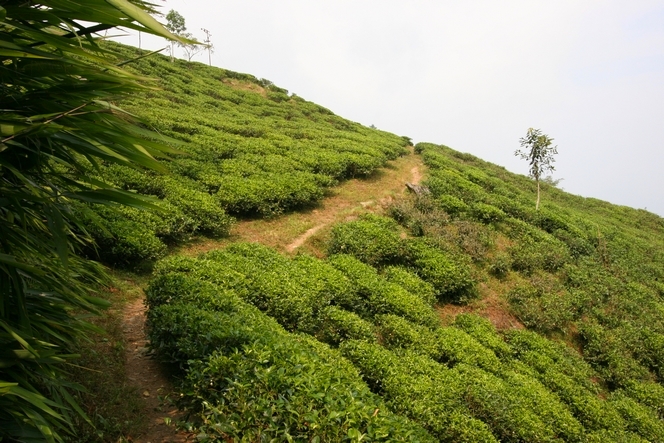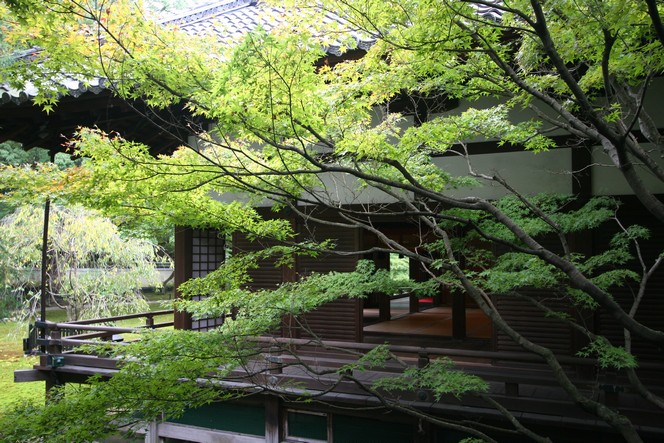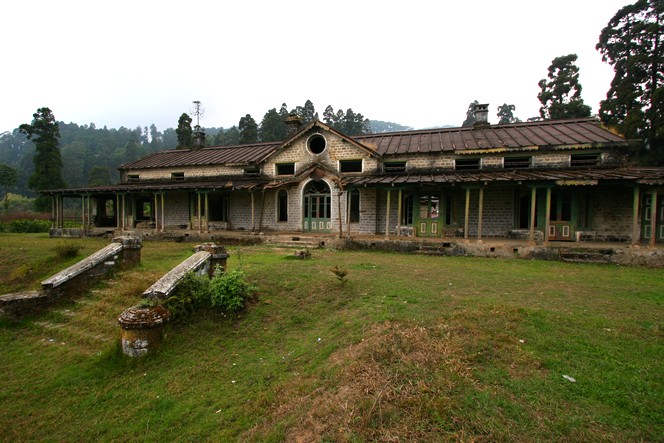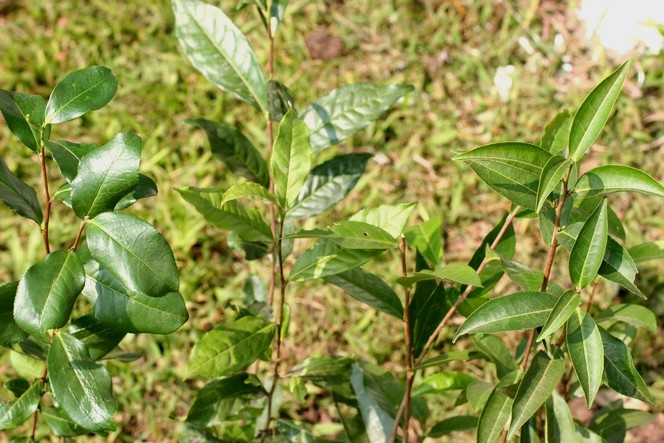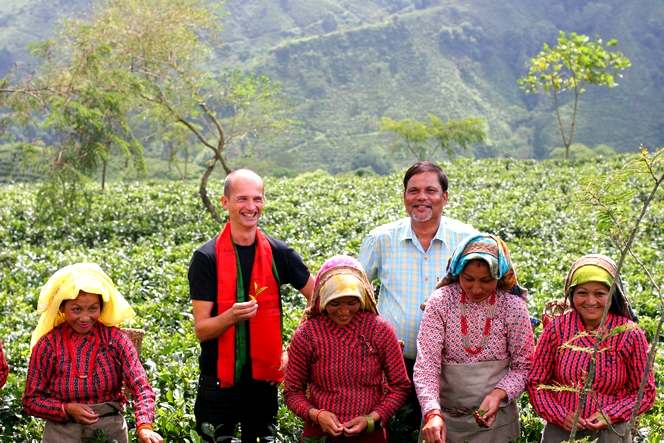To reach the tea plantations, I am used to walking for hours, or driving a 4×4, sometimes both. I don’t usually get to travel by boat, however. But yesterday, that is exactly what I did. At the moment I am looking for the best green teas in East China’s Anhui province. Among these are the true Taping Hou Kui teas, the only ones worthy of this name. They grow on a mountain that is only accessible by boat.
From plant to cup
In China, harvesting of premium teas is in full swing
Here in China, the harvesting of premium teas is in full swing. Some farmers have their own buildings equipped with various machines for processing the tea. Others, like Mr Li, sell their freshly plucked leaves to bigger farmers who have the necessary facilities.
Once harvested, tea spoils quickly. Here, at the Fuding tea market, Mr Li absolutely must find a buyer in the next two hours. With the quality of his leaves, he should have no difficulty, and he gives a big smile for the camera.
Tea plantation in the mists of Darjeeling
Before leaving for China in search of different teas, I have spent most of the past few weeks tasting lots of samples of Darjeelings, receiving up to fifty in one day.
Phuguri, Risheehat, Orange Valley, Gielle, Puttabong, Singbulli, Teesta Valley, North Tukvar, Longview, Thurbo: this year our selection reflects the work of many gardens and represents the best of their production.
This is what the mountains look like where these teas grow, so that while you are enjoying them, you can transport yourself to the mountainside and feel the mists of the Himalayan foothills.
Premium green teas : harvesting has begun
In China, the first tea harvests of the year have begun, and today I am flying to Beijing, then to Huang Shan, the famous Yellow Mountains.
The best pluckings of China green tea take place in April, and Anhui province alone boasts prestigious teas such as Tai Ping Hou Kui, Huang Shan Mao Feng, Huang Shan Mu Dan and Huang Hua Yun Jian, to name just a few.
We have just received a new first flush Darjeeling !
We have just received a new first flush Darjeeling, Longview DJ1, the first lot of the year from the Longview Tea Estate. Because of its location, this garden fortunately avoided the road blocks recently put in place, which I told you about last time, and managed to get its tea to Kolkata.
In the mouth, this tea develops planty, almondy notes. It has a fresh start, followed by delicate aromas of camphor.
These smiling faces belong to pluckers who work at Longview, enjoying a well-earned break.
Darjeeling : blocked situation
The news from Darjeeling is not improving. The Gorkhaland separatists have stepped up their campaign and have basically blocked the movement of the trucks transporting tea. Every day we receive samples, and we can buy the teas, but if they can’t be taken to Kolkata airport, what’s the point? This could last a few days, or several weeks. So the struggle with the government goes on, but where will it lead?
“Where will it lead?” That’s exactly the question I ask myself as I walk the little paths of Darjeeling, like here in Badamtam. I walk without really knowing where I’m going, just following my nose. It’s wonderful! And if I get lost, what does it matter? After all, it’s only me.
The Shoren-In temple in Kyoto: a haven of peace
With the terrible images coming out of Japan at the moment, and with so many people in distress, I wanted to show you another side to this country, and pay homage to its beauty.
In the east of Kyoto, next door to the Chion-In temple, the Shoren-In temple hides in the shade of maple, eucalyptus and willow trees. Cross the stone garden, remove your shoes and step onto the wooden walkway. Admire the soft light filtered by the shojis, stop to look at the pond and then the garden, with its different coloured mosses. A little further on, a tea ceremony is taking place. The host takes the bowl of tea in both hands and raises it slowly up to his forehead, as a sign of respect.
In Darjeeling, an abandoned tea growers’ club
The social life of tea growers is not what it used to be. Look what has become of one of the Darjeeling growers’ clubs today!
This magnificent building is in an advanced state of disrepair, and every time I pass it, not far from the Namring Tea Estate, it saddens me. Situated at the top of the valley and enjoying a magnificent view, its abandoned state sadly only seems to affect me.
Under British rule, and up to around 20 years ago, planters would meet at least once a week, and would value this special opportunity to get together. Today, there is greater competition, and television, like everywhere, is destroying social life. So people stay at home.
B157, P312 and AV2 : three cultivars from Darjeeling
Here we have, from left to right: B157, P312 and AV2. These are their familiar names. Their full names are as follows: Bannockburn 157, Phoobsering 312 and Ambari Vegetative 2. They are cultivars, or “clonals”, as they are called here: tea plants created using different methods, generally by taking cuttings.
Each of the three cultivars has its advantages and disadvantages in terms of its weather hardiness and resistance to pests, its taste and aromatic qualities, and its productivity. They take their names from the plantation that created them.
These cultivars, along with some 30 others developed by the Tea Research Association, are suited to the Darjeeling region. Different cultivars are grown in other parts of the world.
Visiting the Balasun tea plantation
Last week I had the pleasure of visiting the Balasun plantation, in Darjeeling. The plantation got its name from the river Balasun, which runs below it. Anil Jha, who manages the Sungma Tea Estate, and who you can see beside me in this photo, also supervises the Risheehat Tea Estate and the Balasun Tea Estate. He is one of the most respected and most experienced growers in Darjeeling. There are only three or four others with his level of expertise – and authority. I admire him, and I’m also grateful to him, because he was the first person to teach me so much, here on these mountains. We first met 20 years ago, so he has seen me progress, professionally speaking.
Whenever we meet, we talk for hours, united by the same passion.

